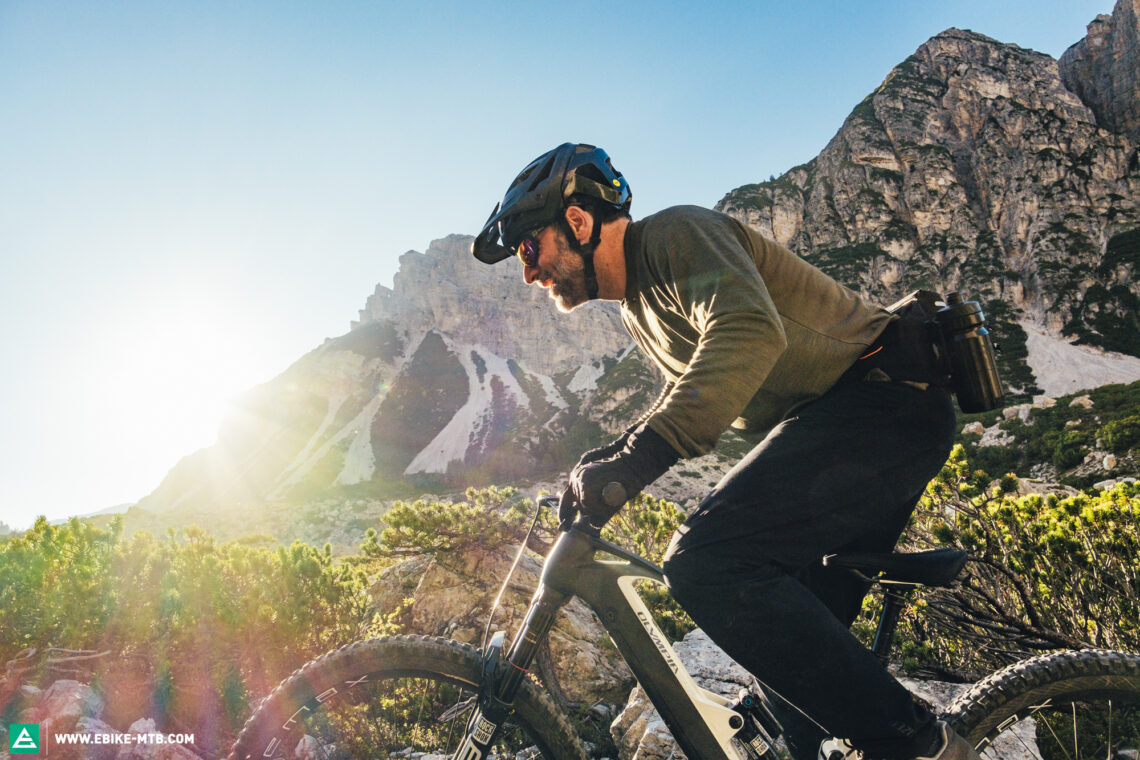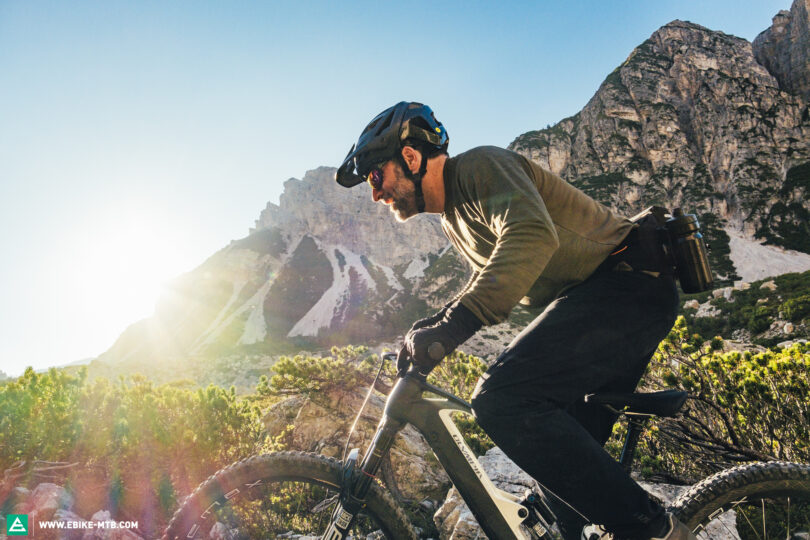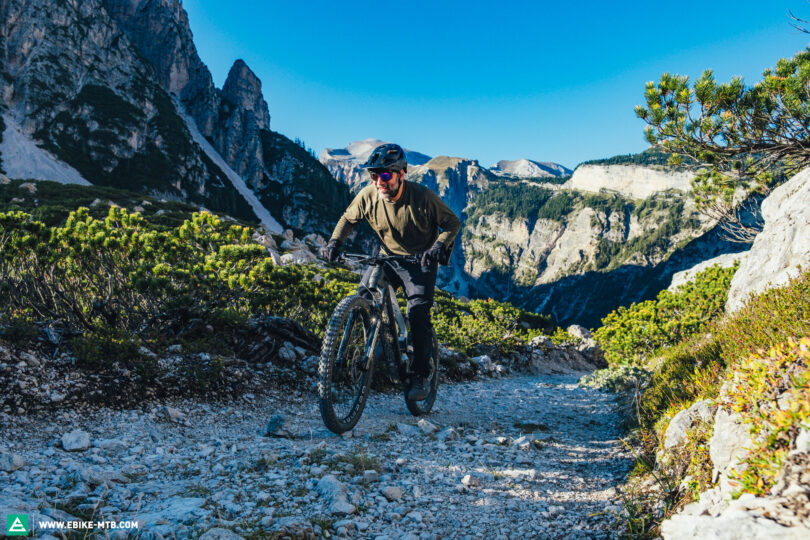“If all you have is a hammer, everything looks like a nail.” Looking at the specs of the big-hitting eMTB Olympia Hammer, this seems like a fitting slogan, built around a long-travel, full-carbon frame, a 90 Nm OLI Edge motor, and a 900 Wh battery. It all sounds very promising, so we put it to the test to find out just how well this approach works out.
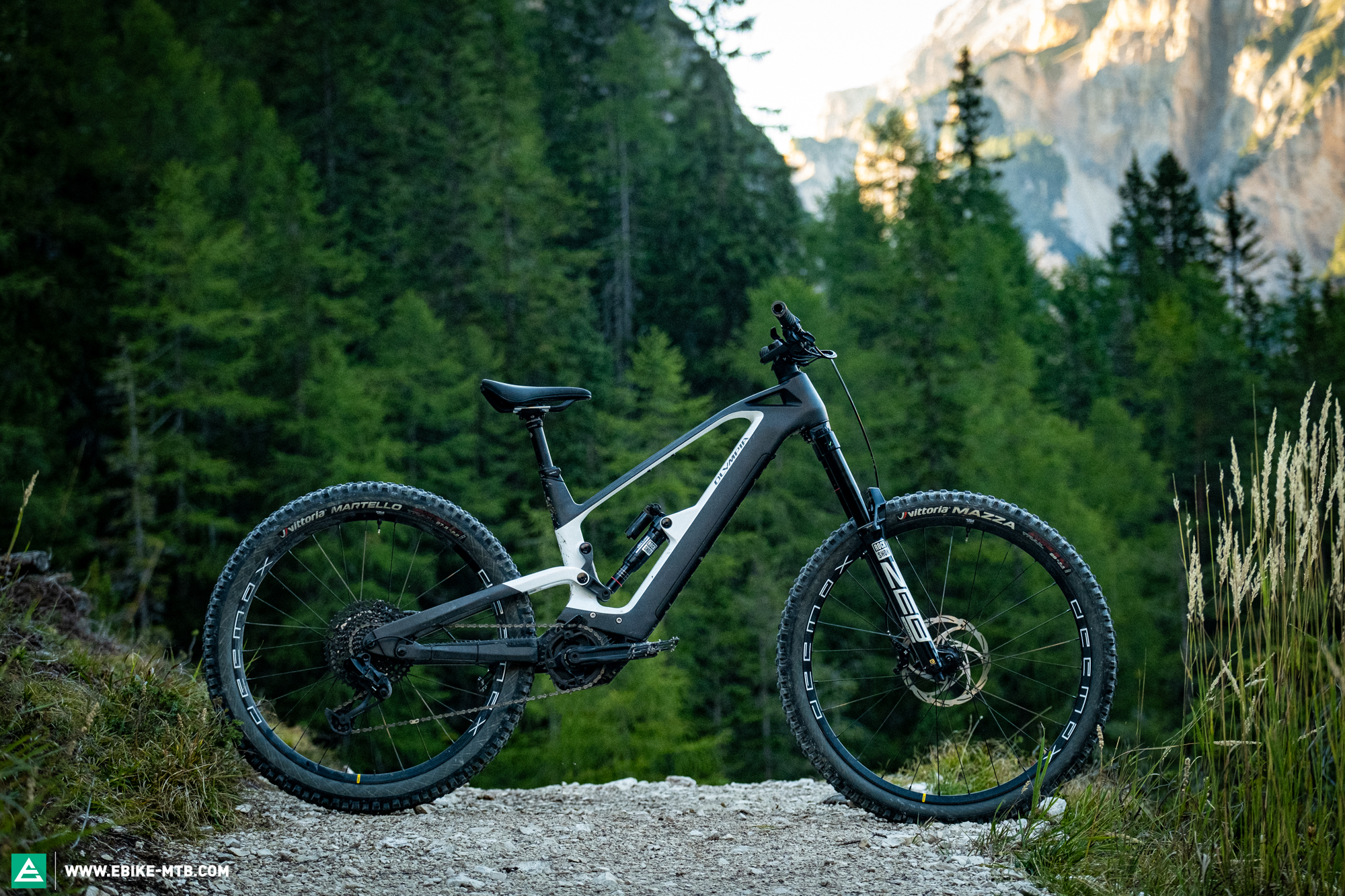
25.26 kg (size M/L) | € 7.899 | Manufacturer’s website
Olympia Hammer sounds like a combination of Greek and Norse mythology. But Olympia are an Italian brand through and through. They’re one of the longest standing bike brands from Italy with a 130-year history. With the introduction of the Hammer, however, Olympia prove that they haven’t gotten stuck in the past. The Hammer is touted as a modern eMTB for technically demanding terrain.
The full-carbon frame provides 170 mm travel, is equipped with high-end components, and relies on a mixed wheel setup with a 29″ wheel up front and a 27.5″ at the rear. The motor is supplied by OLI eBike Systems, who are also based in Italy. In the case of the Hammer, they’re relying on the flagship OLI Edge motor, capable of producing 90 Nm. The motor, in turn, is powered by an enormous 900 Wh battery. The Hammer is officially available in two build variants and three frame sizes. Our test bike doesn’t correspond to any of the builds currently available on the website, slotting in somewhere in between. According to Olympia, this model should cost € 7,899. In the medium frame size M/L, it tips the scales at 25.26 kg.

La prestazione artistica – The extravagant Olympia Hammer in detail
If you were to ride in a group with Santa Cruz and Specialized S-Works owners, the Olympia Hammer would still attract tons of attention. It’s clear that the design played at least as big a role as the performance in the development of the Olympia Hammer. The Hammer has a wedge-shaped front triangle with a steeply sloped top tube, strongly reminiscent of the UNNO Mith. This looks aggressive, and the low standover height should also instil beginner eMTB riders with confidence. Following the lines of the frame, the shock is positioned diagonally against the down tube. Its position also promises to keep the centre of gravity low. The carbon Horst-link at the rear is compact and looks more like a swing arm than a classic rear triangle.
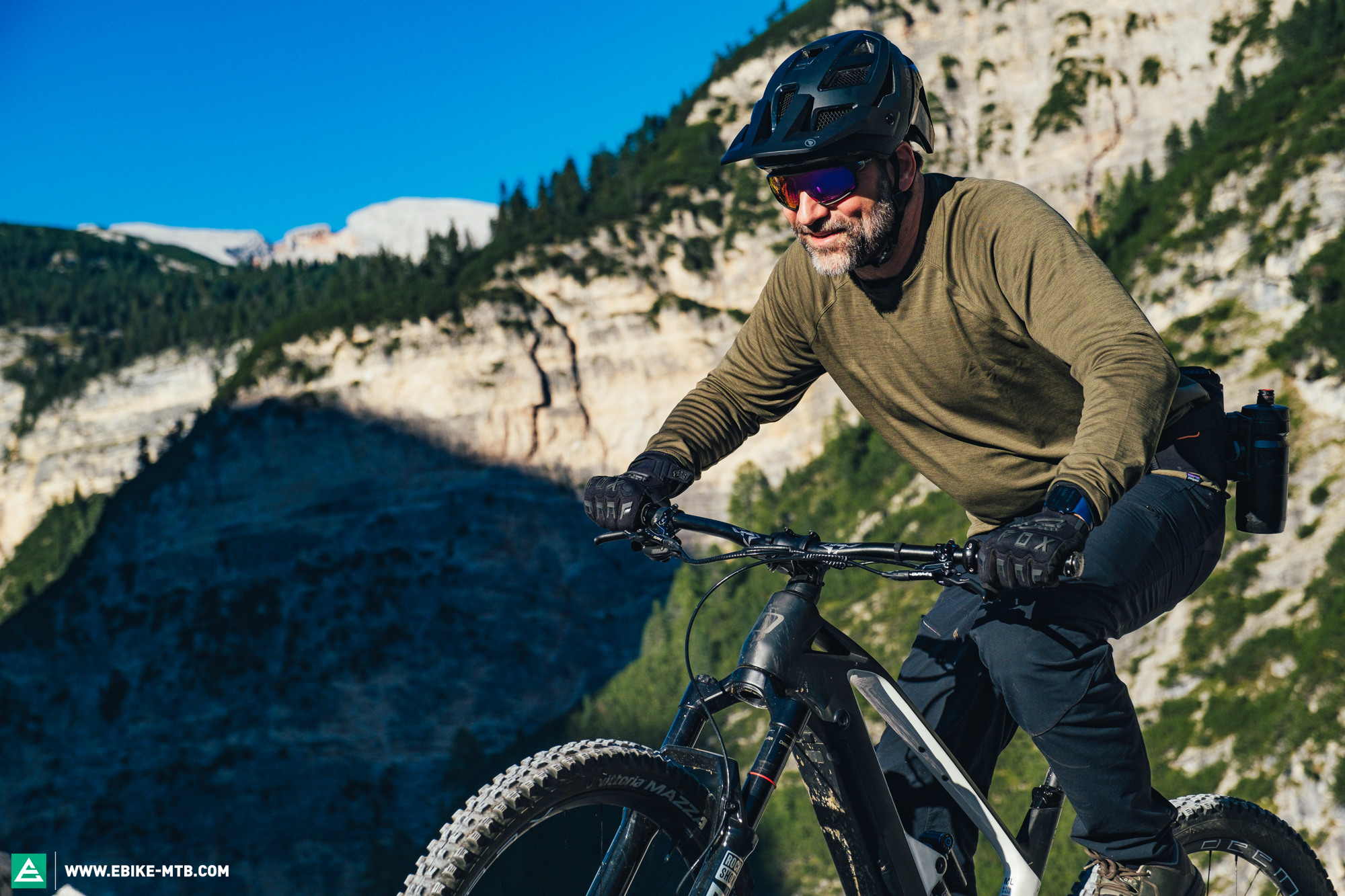
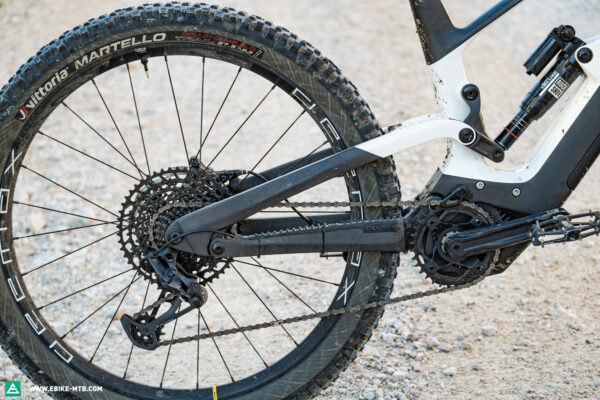
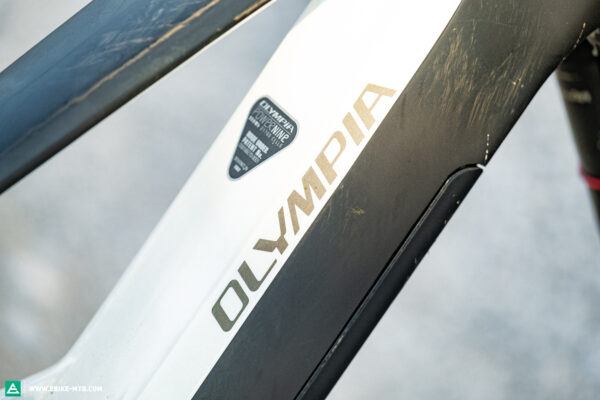
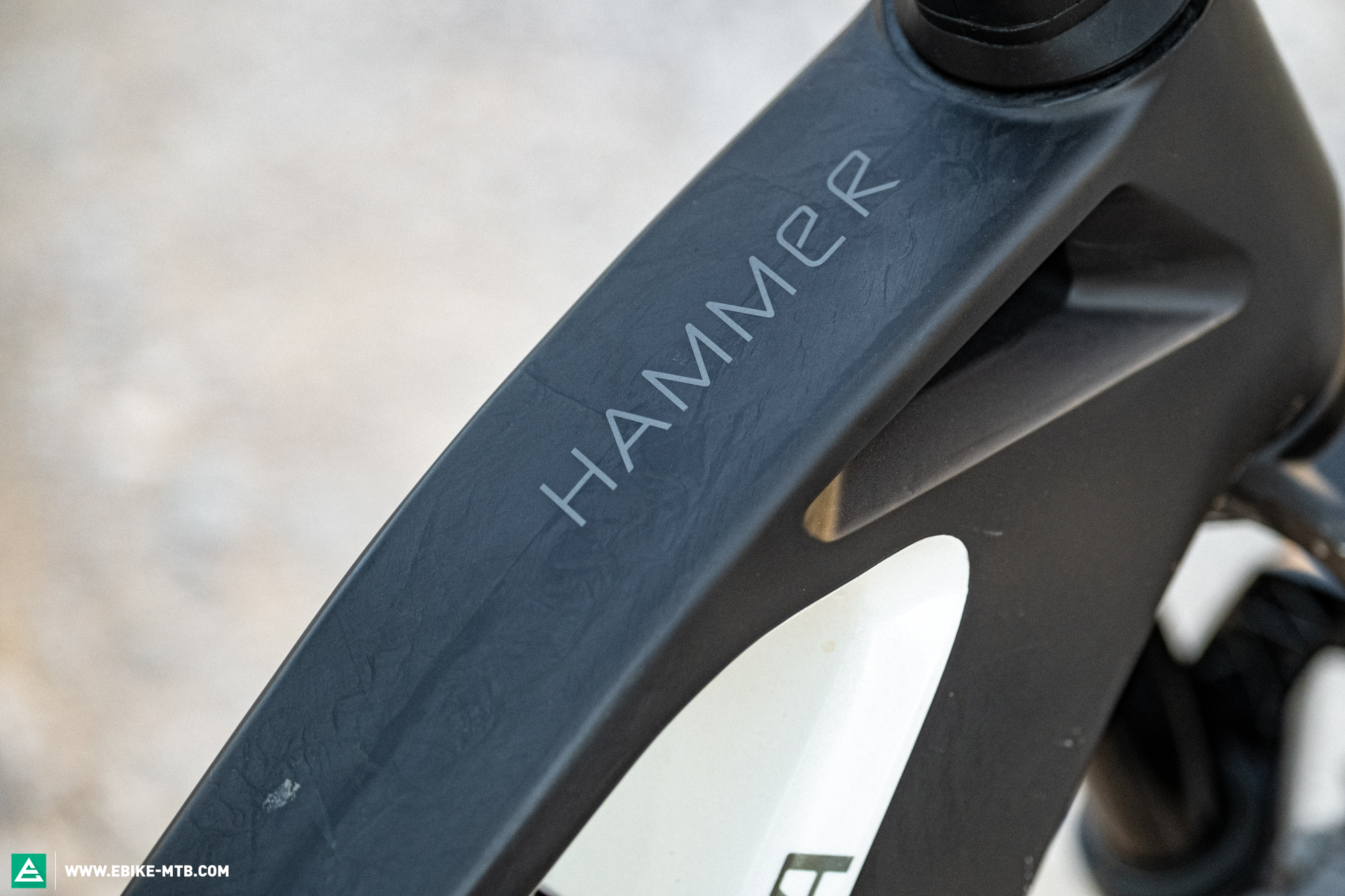
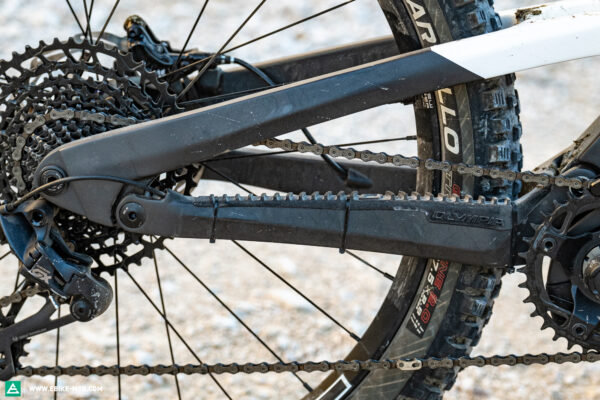
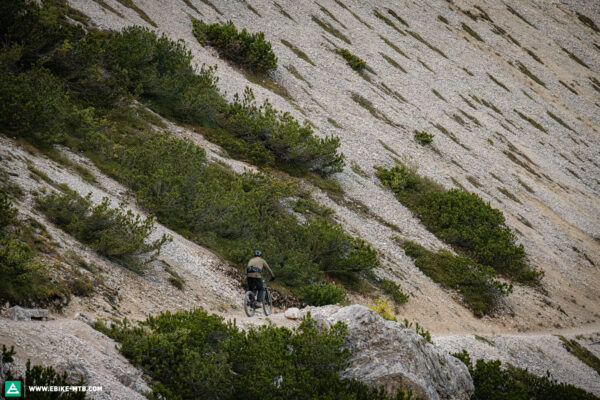
Despite the compact front triangle, there is room for a bottle cage underneath the top tube. Other than that, the stylish eMTB is free of practical details or notable features. Small deductions to the overall design score are due to motor system integration. But OLI eBike Systems might be to blame there…
The OLI Edge motor in the Olympia Hammer in detail
OLI eBike Systems will likely be an unfamiliar name to most readers outside of Italy. So far, the motors of the Italian manufacturer only feature on a handful of ebikes from Italian bicycle brands, the most famous of which is Bianchi.
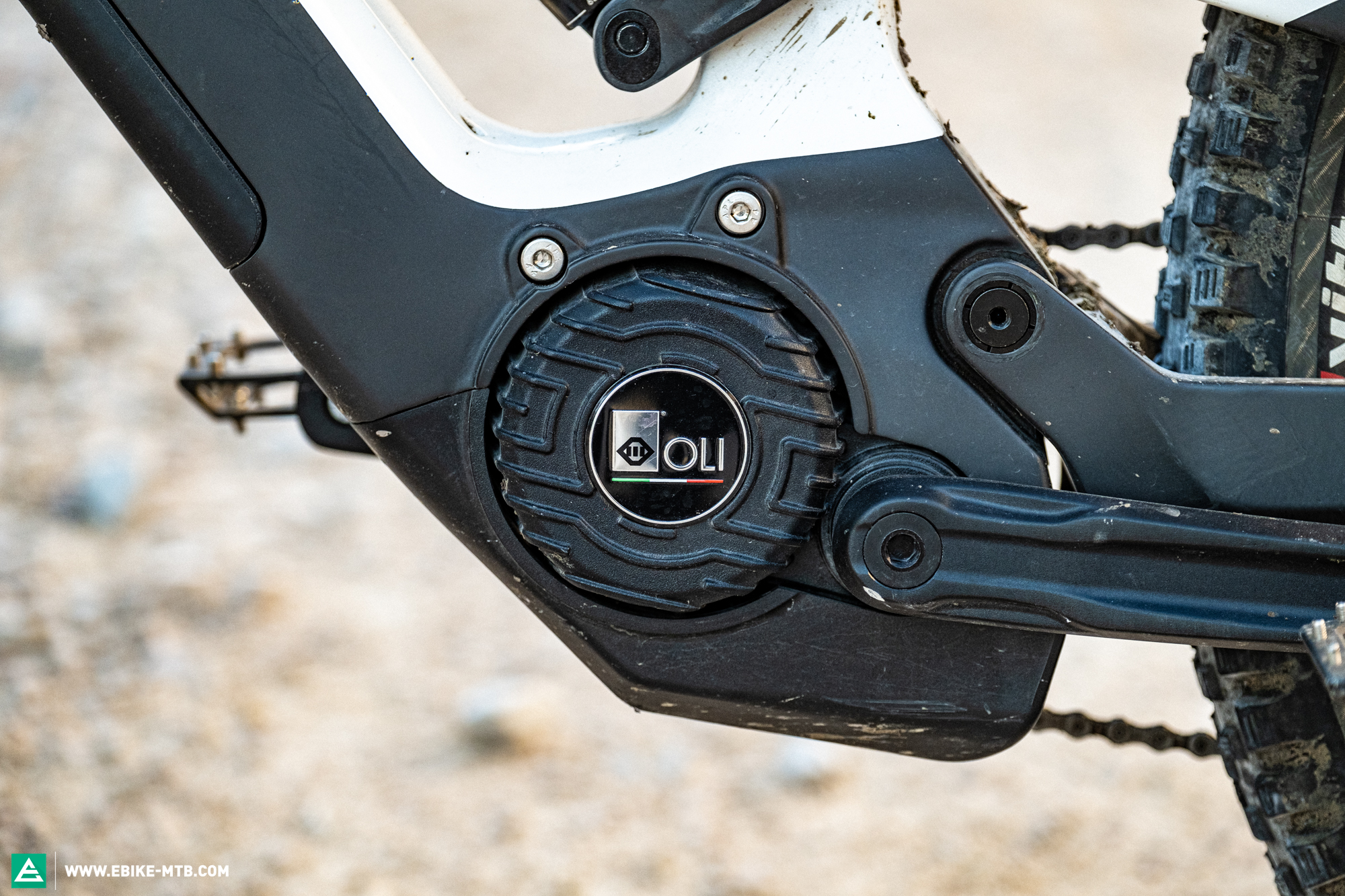
The OLI Edge motor doesn’t have to hide behind the competition. Look at the specs of the Italian brand’s motor in the Olympia Hammer, and you’ll immediately see that it plays in the big league. Though, it’s still got some refinement to do. OLI eBike Systems claim that the Edge motor can put out a whopping 90 Nm of torque. In a promo video, OLI also boast of a 650 watt peak power output at a cadence of 100 rpm, and that the maximum torque output of 90 Nm is already available at just 30 rpm. Our real world tests can back this up, but more on that later.
Viewed from the non-drive side, the 3.2 kg motor is nicely integrated into the frame of the Olympia Hammer, neatly hidden behind a cover. However, the motor is more exposed on the drive side, which may not look quite as good, but provides improved cooling while you ride. In terms of size, the OLI Edge is on par with Bosch motors. Interestingly, the hole spacing of the motor interface is identical to a Bosch Performance Line CX motor, but the motor itself has been designed by OLI eBike Systems. They also offer their top end motor with a mounting interface that corresponds to that of the Shimano EP8. They’ve done this to make it as easy as possible for bike brands to switch to the OLI system – smart. If this has got some of you thinking of “upgrading” their own ebike with the motor, we first recommend reading our “Is it legal to build your own eMTB?” article.

Although OLI eBike Systems offer battery options that match the motor, third-party batteries are also allowed. Olympia seized the opportunity and designed their own PowerNine 900 battery for their eMTB. As the name suggests, the battery has a capacity of 900 Wh, making it one of the biggest models on the market. The battery inserts into the frame from below, with the hard plastic battery housing doubling as a down tube protector. It’s secured with a key, and you must push the button above the battery to release it.

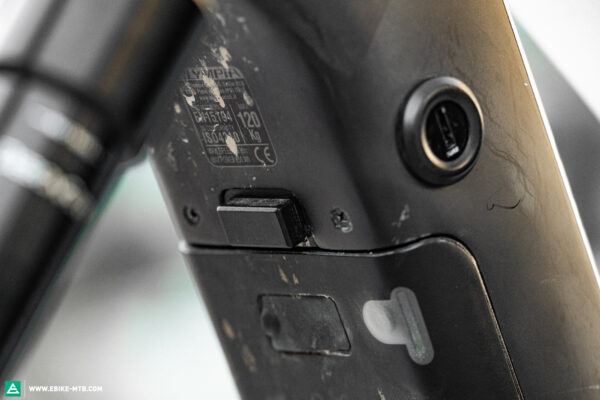
The battery also houses the charging port, power button, and a colour LED status indicator. Despite its capacity and wealth of functions, the battery is relatively short and light. It measures 43 cm in length, and weighs 4.77 kg. For comparison, the Bosch PowerTube 750 weighs 4.38 kg, and measures 48 cm in length, making it just under 400 g lighter and 5 cm longer despite the lack of an integrated cover and 150 Wh less capacity. But small differences like these don’t necessarily affect the bike’s performance on the trail, which is what ultimately matters.
The other system components and the integration of the OLI motor look a bit outdated. The three-button remote is inconspicuous, though it could be a tad more compact. The 2″ colour display also does the job and is easy to read, but the bulky housing doesn’t meet our expectations for 2023. Our biggest peeve is all the cables in front of the stem. They make the cockpit look untidy before entering the frame via the Acros headset. But what’s going on in front of the stem becomes uninteresting as soon as you start fiddling with the many different support modes on the display.
An ebike with a built-in motor configurator – The many riding modes of the OLI Edge motor in the Olympia Hammer
In the default or Original setting, the OLI Edge motor on the Olympia hammer has six levels of assistance to choose from. The number of modes is up to the manufacturer and can vary from bike to bike. On the Olympia Hammer, the default Original modes are unimaginatively named 1, 2, 3, 4, 5 and R – in this case, R is for race, not reverse. The motor power, dynamics, and response increase with each level. A software update in October 2023 added three freely configurable Eco, Comfort, and Power modes. Although the display has an ANT+ and Bluetooth interface, the software update must be installed by an OLI eBike Systems dealer – they’re yet to introduce an accompanying app or over-the-air updates.

Put simply, the power output as well as consumption increases as you go from Eco to Comfort to Power mode, and the assistance goes gradually from easy to control to super responsive and aggressive.
To make things a little more complicated, each mode has four separate levels, each of which has up to six separate parameters, which can be dialled up or down in steps or several percentage points. The adjustment range of the parameters depends on the respective mode and level. Thus, level 1 of Eco mode is always weaker than levels 2 to 4, and always weaker than level 1 of Comfort and Power mode. The adjustment of the individual parameters has a noticeable effect on the motor characteristics.
The individual parameters are:
- Assistance – the OLI Edge motor provides up to 400% motor assistance. As an example of the adjustment range: in level 1 Eco mode, the adjustment range is 50 to 150%, in level 4 Eco mode, it’s 250 to 300%, and in level 4 Power mode, it’s 200 to 400%.
- Max Torque – this option allows the maximum torque output of 90 Nm to be throttled in 10% increments. The adjustment ranges from 30 to 100%.
- Acceleration – sets the progression of the acceleration curve from 10 to 100%.
- Deceleration – determines how quickly or slowly the motor cuts out, ranging from 30 to 100%.
- Reactivity – describes how quickly the motor responds to pedal input. The scale goes from 0 to 3. The 0 setting is like a distracted motorist who checks their smartphone at every traffic light and only occasionally looks up to see if the traffic light has turned green. In stage 3, the Olympia seems to be capable of reading your mind and responds even before you put your foot on the pedal.
- Over-Run – lets you adjust the sustained response from 0 to 3. Over-run describes how long the motor keeps on assisting once you stop pedalling, not how fast the motor cuts out. Moreover, the over-run can only be adjusted in power mode.
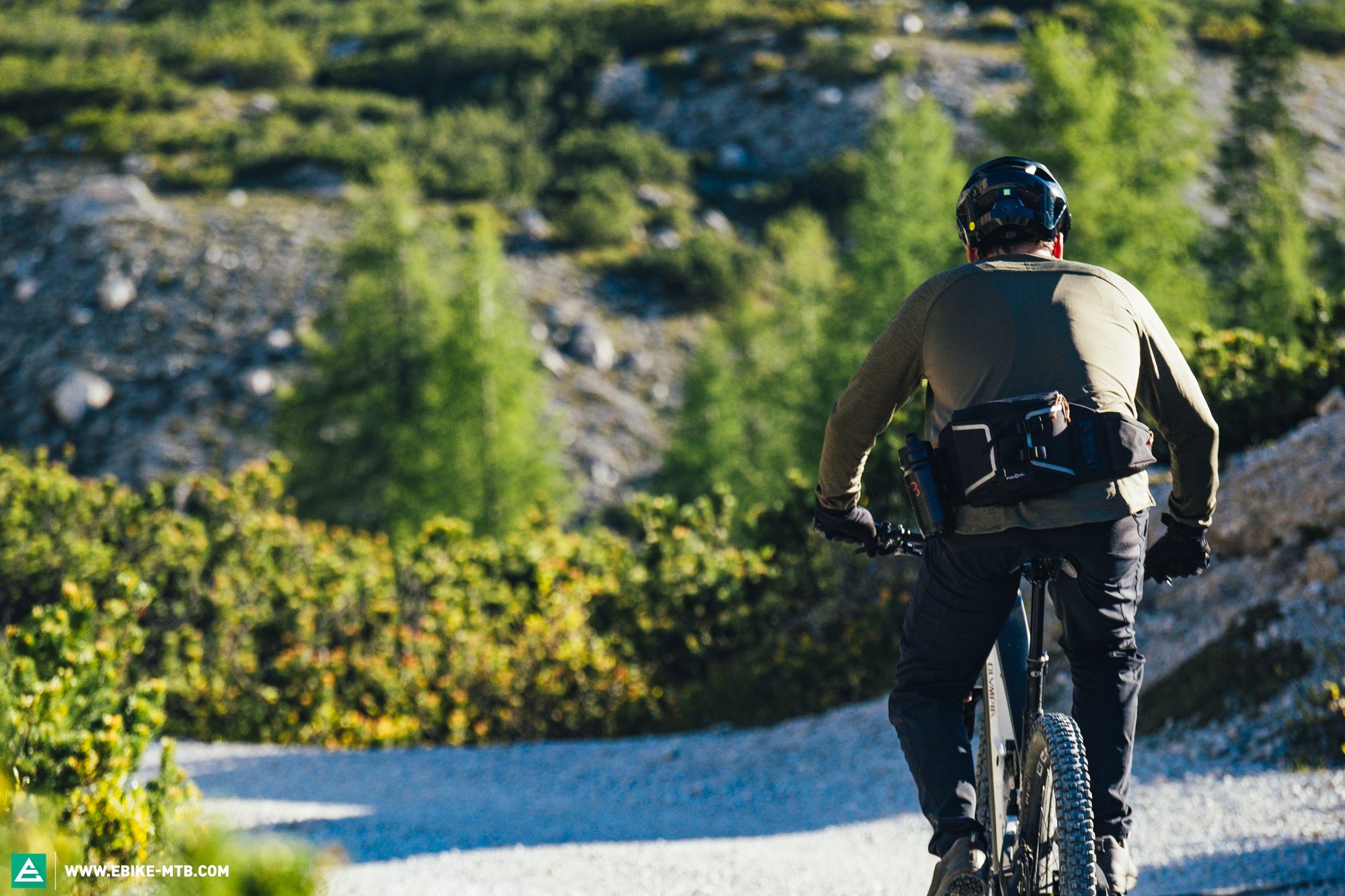
While riding, you can use the arrow keys to switch between levels within a support mode, but you can’t change the support mode itself. To change the support mode (Original, Eco, Comfort, Power), you must call up the last menu page on the display with the third button on the remote. You can then select the desired mode, after which you’re brought back to the home page. While it’s easy to change the levels on the fly, we recommend briefly pulling over to the side and stepping off the pedals to change the mode. Fiddling with the remote to change the mode can be quite distracting.
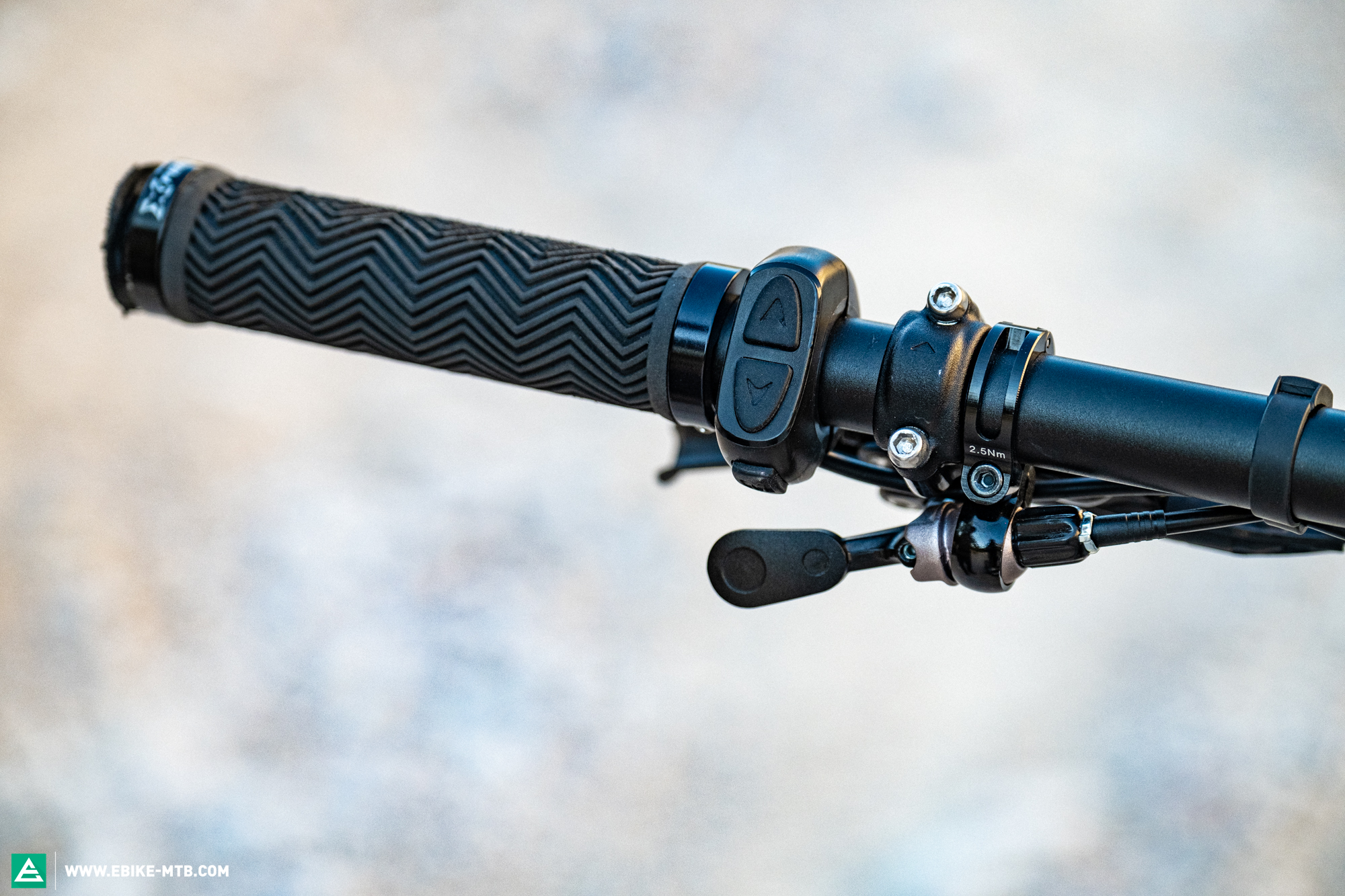
The display also provides access to a wealth of other motor related data, among them the Wh power consumption per km. If the system is to be believed, our average consumption levelled off at 21.7 Wh per km. Furthermore, you can see your own power input and the additional output of the OLI motor. Again, if the system is to be believed, the motor output goes up to over 900 watts! However, it can be assumed that it’s displaying the electrical power of the battery. If efficiency losses due to the motor and drivetrain are subtracted from this, the claimed 650 watts of mechanical power are more than realistic.
The display also indicates the distance travelled, riding time, and your calorie consumption. The calorie consumption is presumably based on the rider’s gender and weight, which you can configure via the display. Surprisingly, the system allows a rider weight of 150 kg, while the total permissible weight of the Olympia Hammer is 120 kg. Minus the bike’s weight, that leaves just 94 kg for the rider, so current and future Hammer owners might want to hold back at the buffet.
The components of the Olympia Hammer in detail
At the beginning of 2023, there was just one Hammer build to choose from, which corresponds to the bike on test. You’ll now find two build variants on the Olympia website: the regular Olympia Hammer and the Olympia Hammer AXS. The AXS version comes with RockShox Ultimate suspension and a SRAM GX Eagle AXS drivetrain. The regular Olympia Hammer features the more lower end mechanical SRAM GX/SX Eagle drivetrain, a RockShox ZEB Select fork, and a Super Deluxe Select+ shock. Other than that, the different models rely on the same components, corresponding to our test bike. The price for the entry-level version should be around € 7,692. We’re yet to find out what the flagship model costs.

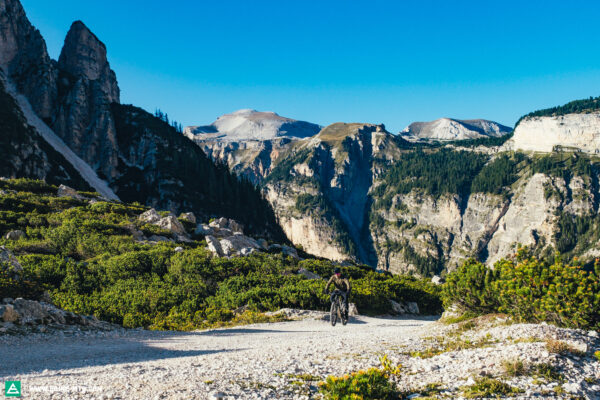
According to Olympia, you’ll have to fork out € 7,899 for the model on test. Considering the components, Olympia certainly offer good value for money – it could almost compete in our budget group test of bikes for under € 7,000. For that money, you get RockShox Ultimate suspension consisting of a ZEB fork and Super Deluxe shock, both of which offer easy adjustability and top-end performance, paired with a mechanical SRAM GX/SX-Eagle 12-speed drivetrain. The brakes and tires are sourced from Italian manufacturers. The powerful Formula Cura 4 disc brakes make the relatively small 180 mm rear rotor glow white hot. The Mazza (front) and Martello (rear) tires from Vittoria are responsible for keeping you rubber side down. A standout feature of the smaller 27.5″ Mavic Deemax rear wheel is the 157 mm Super Boost Plus hub spacing. According to marketing claims, this should result in a particularly stiff rear end, and a slightly more robust wheel thanks to the widened spoke angle.

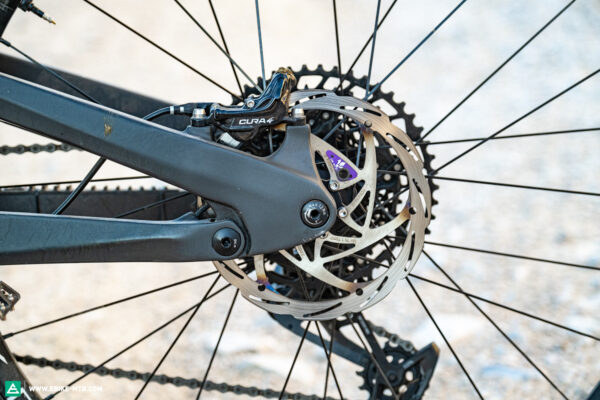


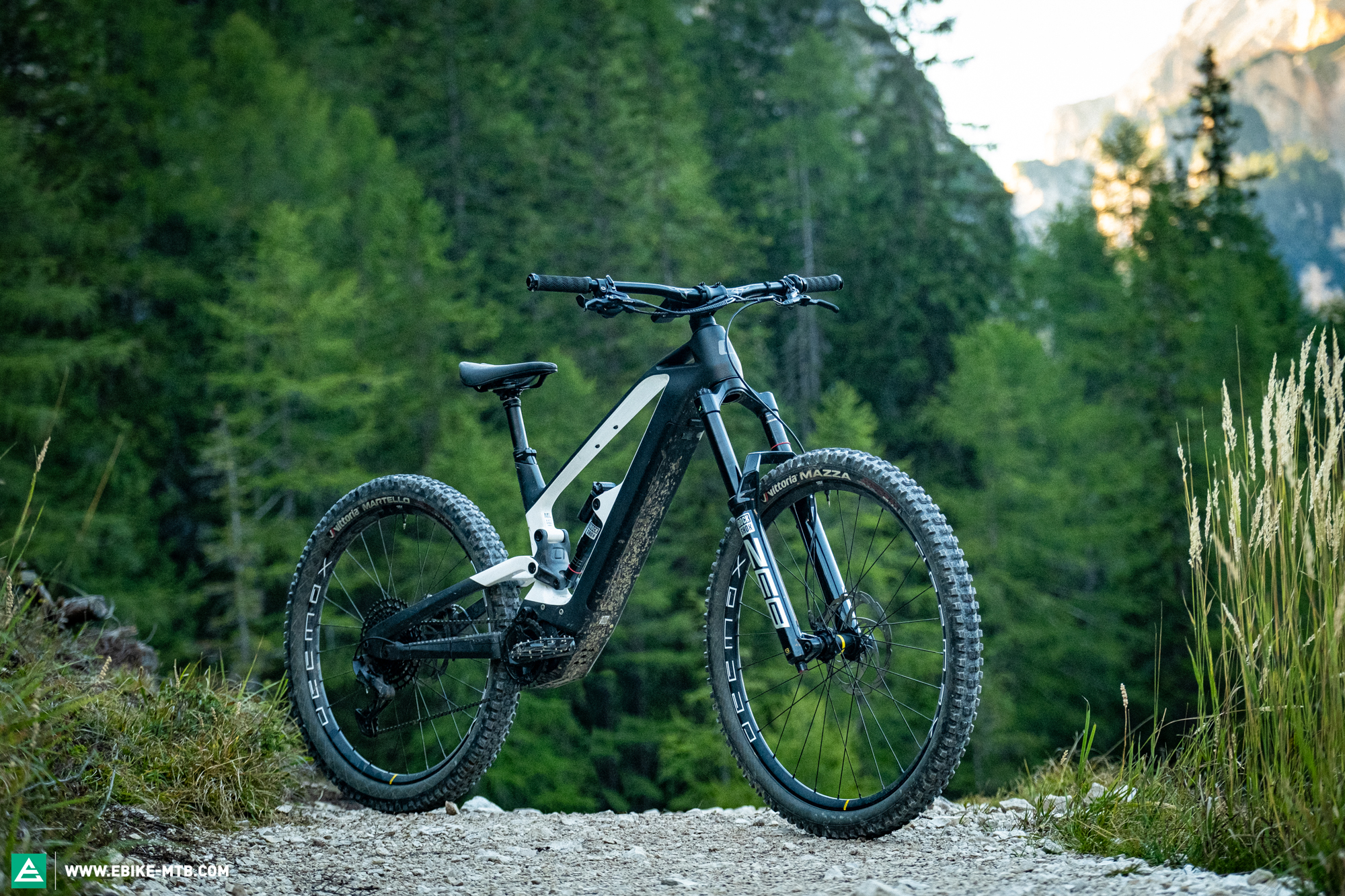
Olympia Hammer
€ 7,899
Specifications
Motor OLI Edge 90 Nm
Battery PowerNine 900 900 Wh
Display OLI High Vision
Fork RockShox ZEB Ultimate 170 mm
Rear Shock RockShox Super Deluxe Ultimate 170 mm
Seatpost Crankbrothers Highline 3 160 mm
Brakes Formula Cura 4 203/180 mm
Drivetrain SRAM GX/SX Eagle 1x12
Stem X-Feel Top 45 mm
Handlebar X-Feel Top 800 mm
Wheelset Mavic Deemax 29"/27.5"
Tires Vittoria Mazza/ Martello Graphene 2.0 Trail 2.4"/2.8"
Technical Data
Size S/M M/L L/XL
Weight 25.26 kg
Perm. total weight 120 kg
Max. payload (rider/equipment) 94 kg
Trailer approval no
Kickstand mount no
Specific Features
Flip Chip
The geometry of the Olympia Hammer in detail
The Olympia Hammer is available in intermediate sizes S/M, M/L, and L/XL. Riders under 172 cm tall are advised to go for the smallest model, while those measuring more than 182 cm are recommended to go with the L/XL. Our size M/L test bike is recommended for riders between 170 and 185 cm tall. The geometry values of the Hammer are modern in almost all respects, corresponding approximately to what the market has settled for on big-hitting, gravity-oriented bikes. The chainstays of the smaller frame sizes are relatively short at 438 mm, growing to 443 mm in size L/XL. One particularly striking geometry figure is the bottom bracket drop of just 5 mm below the rear axle, and 20 mm below the front axle.

There is a flip chip in the shock mount for geometry adjustment. This should allow you to slacken the already relatively slack head angle of 64° by an additional 0.5°. The low setting should also increase the rear-end progression, slacken the seat tube angle, and theoretically lower the bottom bracket. But we predominantly rode the Olympia Hammer in the high setting, and we’ll tell you why when we got to the part about how it rides.
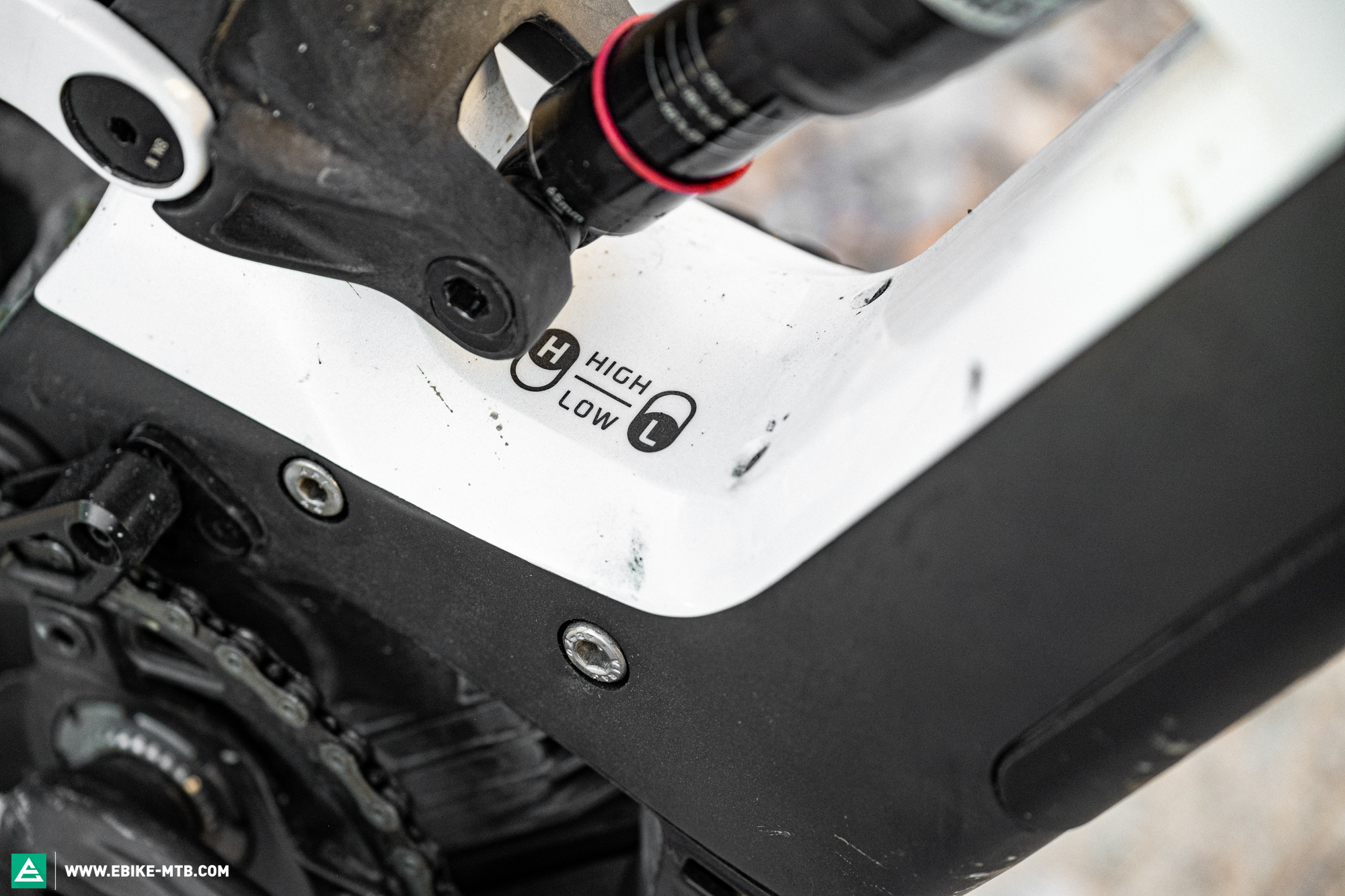
| Size | S/M | M/L | L/XL |
|---|---|---|---|
| Top tube | 585 mm | 609 mm | 634 mm |
| Seat tube | 405 mm | 420 mm | 450 mm |
| Head tube | 115 mm | 115 mm | 130 mm |
| Head angle | 64° | 64° | 64° |
| Seat angle | 77° | 77.5° | 78° |
| Chainstay | 438 mm | 438 mm | 443 mm |
| BB Drop | 5/20 mm | 5/20 mm | 5/20 mm |
| Wheelbase | 1,225 mm | 1,254 mm | 1,293 mm |
| Reach | 439 mm | 470 mm | 500 mm |
| Stack | 632 mm | 632 mm | 646 mm |
Hammer time – The Olympia Hammer and OLI Edge motor on the trail
Test riding the Olympia Hammer gave us mixed feelings. On the upside, the slightly unbalanced suspension and minor drawbacks regarding the components are overshadowed by a motor that’s incredibly fun thanks to its unbridled performance. But first things first.
When you swing your leg over the Olympia Hammer, the tall cockpit tries to integrate you into the bike, whereas the high bottom bracket does the opposite in the high setting, ultimately making you feel more like you’re perched on top of the bike than sitting between the wheels. Nevertheless, long rides aboard the Olympia Hammer require little effort, thanks to the powerful motor.

In principle, the Eco and Comfort modes of the OLI Edge motor can be tuned in such a way that it responds smoothly, allowing you to cruise along leisurely while maximising the battery range, but we soon forgot about this after a short introductory ride. If someone hands you their Ferrari and their credit card for when you need to refuel, you’re not interested in testing its fuel economy by keeping the revs low. It’s the same with the OLI Edge motor paired with a massive 900 Wh battery.

We switched to the new Power mode right before the first climb, and dialled all the parameters up to the limit. According to OLI, the most efficient cadence range is 65–70 rpm. But the motor delivers so much power even at lower cadences that we often found ourselves not bothering to shift down on the climbs. With the Reactivity set high, just touching pedals is enough for the motor to unleash its power. The motor also performs well at higher cadences and you can easily keep up with current top dogs like the Bosch CX. Once again, the motor shows its responsive side and kicks in more quickly than most other motors on the market. it converts even the smallest bit of pedalling input into acceleration. This is accompanied by a quiet, high-frequency hum.
If you’re rolling towards a muddy climb, it’s better to just stay seated and let the motor do the work for you, rather than standing up and mashing the pedals or trying to master technical climbs with finesse. When you’re standing up to pedal, the Hammer sinks into its travel. And every time it bounces back up, the Vittoria Martello rear tire spins out. Designed for dry and compact surfaces, the tire certainly cuts a better figure on the rocky trails of sunny Italy than in wetter conditions.
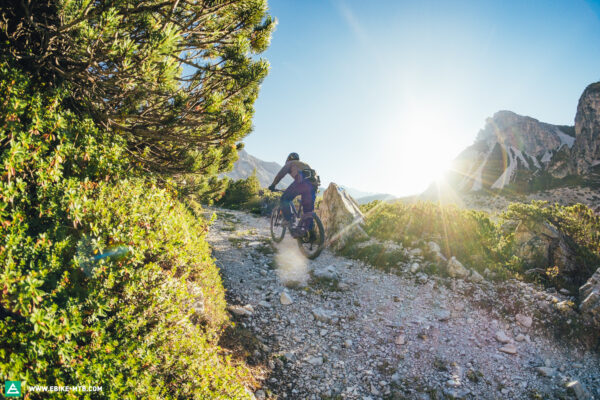
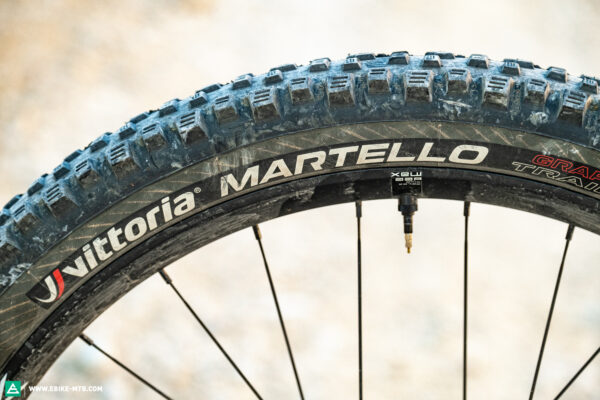
You could see this as an opportunity to plough up the mountain in motocross hill climb fashion. If you turn the over-run to the highest level (3), the rear wheel almost never stops. Whether you’ve got a heavily fluctuating pedalling cadence or briefly stop the cranks in the horizontal position, the motor continues pushing on relentlessly. Just putting in the occasional pedal stroke is enough to keep the motor churning. A grippy and aggressive rear tire like the Schwalbe Eddy Current could work wonders here and help transfer more of the motor power to the ground, converting it into propulsion.
Tuning-Tipp:– bigger rear brake rotor
– hill climbers should fit a super grippy rear tire for loose terrain, like the MAXXIS ASSEGAI or Schwalbe Eddy Current.
The Olympia Hammer eMTB on the descents
For the descents, you should put the motor on a shorter leash in the settings so as not to get pushed out of the corners. For such instances, the motor engineers have thought of integrating a kill-switch in the system. If you’ve got a high over-run setting and the motor just keeps pushing after you’ve stopped pedalling, all you must do is back pedal to instantly cut out the motor. Playing with the kill-switch is easy in the parking lot. However, it takes practice for this to work in stressful situations, requiring a high level of bike handling skills and awareness.
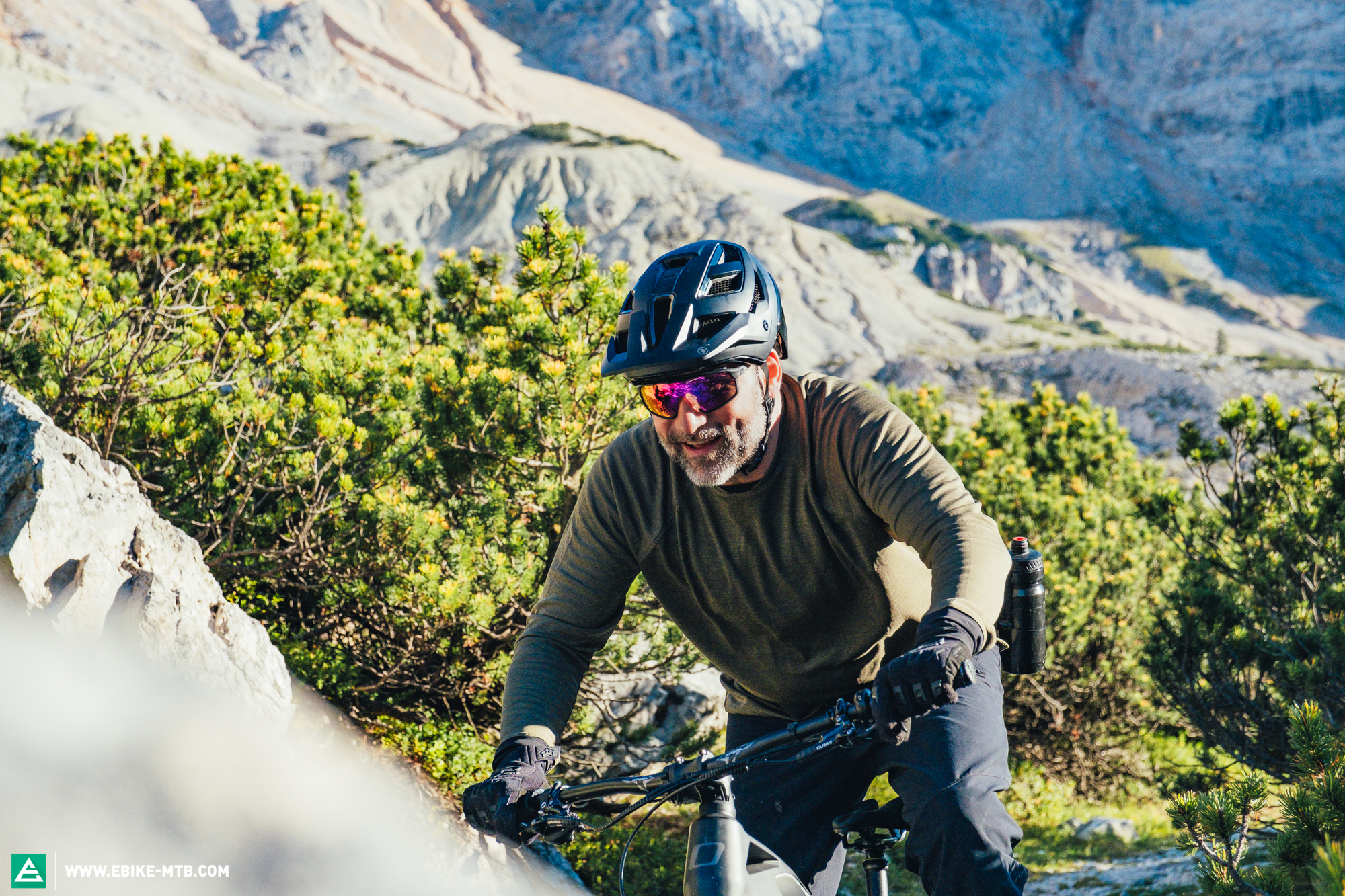
Power to the People – The OLI Edge motor makes the Olympia Hammer more powerful than a pneumatic impact drill.
The Olympia Hammer doesn’t feel at home on tight and super steep hairpin bends, where the long over-run could become a problem. Furthermore, the soft suspension offers little support when the rear end is actively loaded. Despite the small rear wheel and short chainstays, it’s not particularly agile, either, requiring a lot of physical effort to navigate through tight, winding trails. On steep sections, the small 180 mm rear brake rotor also has the brake fading rather quickly, so you’ve got to pull the brake levers all the harder to bring the Hammer to a stop.

As the name suggests, the Olympia Hammer is more in its comfort zone when you hammer down the mountain in a straight line, staying off the brakes. In that case, the long travel suspension can play to its strengths and absorb all the hits. Through open corners, however, you’ll want to shift your weight forward to get enough traction on the front wheel. It’s for this reason that we left the Hammer’s rear end in the high setting, which helps shift its centre of gravity forward.


Conclusion on the Olympia Hammer eMTB
The Olympia Hammer benefits enormously from the powerful OLI Edge motor, which is a large part of what makes this bike fun to ride. The Hammer itself delivers more in terms of its extravagant design than with versatility and performance on the trail. Some poorly specced components and the complex motor setup might scare off eMTB beginners. Experts who know how to use such a powerful motor, on the other hand, will get their money’s worth. Considering what you get for the money, it’s good value, too.
Tops
- powerful motor
- highly tunable motor characteristics
- beautiful design
Flops
- suspension lacks support
- unsightly cable routing in front of the cockpit
- rear brake rotor is too small
For more information, visit olympiacicli.it.
Did you enjoy this article? If so, we would be stoked if you decide to support us with a monthly contribution. By becoming a supporter of E-MOUNTAINBIKE, you will help secure a sustainable future for high-quality cycling journalism. Click here to learn more.
Words: Rudolf Fischer Photos: Antonia Feder




